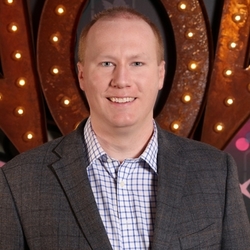In continuation of our pre-conference speaker interviews’ series, I was excited to talk about influencer marketing with one of our 2017 keynote speakers, Ryan Schram of IZEA.
Enjoy his great answers below (and don’t miss him at the upcoming Influencer Marketing Days).
Question: In a few words, could you please tell the IMD’s community about yourself and what you do?
 Ryan: As Chief Operating Officer, my role encompasses a range of responsibilies within IZEA – including global client development, corporate business development, customer experience, marketing communications, M&A, and human capital.
Ryan: As Chief Operating Officer, my role encompasses a range of responsibilies within IZEA – including global client development, corporate business development, customer experience, marketing communications, M&A, and human capital.
Question: Influencer marketing has been around for a few years and has already had its share of ups and downs. What are the biggest challenges that you see it face now?
Ryan: In the 12 years that IZEA has been in this space, there have been many ebbs and flows within the category. Currently, I believe the largest challenges are around authenticity and disclosure — especially in the celebrity and “web celeb” aspects of influencer marketing. The endorsement of products with blatant disregard to FTC, ASC, and WOMMA transparency standards is highly-alarming.
Question: How can marketers overcome these?
Ryan: It starts with being aware and educated. In our 2017 State of the Creator Economy Study, we learned that less than a third of marketers are aware and/or understand disclosure standards. As a result, almost a third of Creators surveyed reported that brands specifically asked them to *not* disclose their sponsorship when conducting a campaign. There is shared responsibility for blame here, but I believe the buck starts with the marketers who are making the financial investment and the agents/managers who are representing many of these frequent offenders.
Question: What, in your opinion, is the biggest advantage of (doing) influencer marketing?
Ryan: As a society, we’ve become desensitized to most traditional advertising. Consider this: there’s a better chance that you survive a commercial plane crash than intentionally clicking on a banner ad over the course of the year. And yet, it’s still a multi-billion dollar industry! Influencer Marketing breaks through that clutter by virtue of leveraging the trusted relationship forged between Creators and their followers. In its truest form, the medium is authentic storytelling to a willing and engaged audience — that’s the magic.
Question: When operating on a tight budget, but wanting to hop on the influencer marketing bandwagon, where would you recommend a company to focus their efforts, how, and why?
Ryan: I’d start by identifying a handful of genuine fans of your product — either categorically or directly. From there, I would ask them to create a series of multi-platform posts across long-form and short-form platforms — for example, their blog, Instagram, and Facebook presence. Then, I would focus targeted monies to boost their original post against traditional media KPI’s — ideally from the influencer’s handles directly.
Question: On September 26, 2017 you’re keynoting Influencer Marketing Days. Why should marketers want attend your session?
Ryan: The State of the Creator Economy is the largest body of knowledge in our industry. It marries 3 distinct viewpoints that surround influencer and content marketing ecosystem: that of the marketer, the creator, and the consumer. Our research partners at The Right Brain, Halverson Group, Lightspeed GMI, and ResearchNow have truly outdone themselves with this year’s findings. I can’t wait to share them with everyone!
Question: If you were to give one influencer marketing advice to brands/advertisers, and one to influencers, what would they be?
Ryan: To borrow a phrase from Roy Spence, “it’s not what you sell, it’s what you stand for.” For Creators: don’t be a paid shill — even if you’re getting paid. If you don’t love a brand/product, your audience will be able to sense it from a mile away. Losing your credibility isn’t worth the money! For Marketers: recognize that the “shiny coin” platforms like Snapchat or influencers that are screen-famous may not be right for your strategy. Be sure to work with partners that know the difference!

Recent Comments